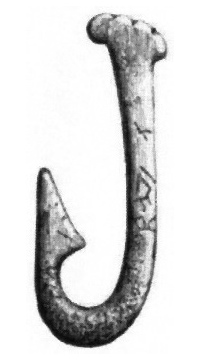
Further to “New analysis: Planck data more in line with Standard Model than originally thought?”, which prompted the question: Why is it always supposed to be such a big surprise that the Standard Model works? Or are we missing something?, physicist Rob Sheldon kindly replies,
The discussion is about the ~3-degree blackbody radiation left over from the Big Bang. As the universe exploded, it radiated light everywhere, and as the universe expanded, both the matter and the light expanded. This cooled the matter off, and it stopped radiating–since radiation goes as the fourth power of temperature, a slight bit of cooling can completely shut off the light. Then the light cooled–yeah, I know–because the universe stretched, and when spacetime stretches, neither the frequency nor the speed of light changed, so it was the wavelength that stretched. So what initially started out as X-ray light is now a cool 2.75K, 160GHz or 1.06 millimeter wave — just a tad shorter wavelength than your microwave oven.
This radiation was predicted by American physicists, Ralph Alpher and George Gamow, in the late 1940’s and also promoted by the Princeton theorist, Robert Dicke. It was accidently discovered by two AT&T physicists, Arno Penzias and Robert Wilson in 1964, who got the Nobel prize for it. Then NASA launched a satellite mission in the 1980’s, COBE, that found a slight statistical wiggle in the blackbody radiation, but 100 to 1000 times smaller than the signal! This led to a famous cover of Scientific American where the lead investigator, a Harvard physicist named George Smoot (not the younger brother whose height was used to measure the length of the Charles River bridge), proclaimed he had seen “The Face of God”, (If only), which he said was important because it provided the “seed” for matter to condense into galaxies in the billion years after the Big Bang. The COBE mission was truncated early after 9 months or so because they ran out of liquid helium to cool the detectors having forgotten about the Van Allen radiation belts, so NASA followed this mission up with another one called WMAP which did not need liquid helium and ran for 10 years or so getting a much more honest picture of the blackbody radiation than Smoots. (If you compare them, you will see that WMAP looks nothing like COBE, even if you blur WMAP.)
Finally, the Europeans scraped their pennies together and launched the Planck mission in 2009. George Gamow got a Nobel, as did George Smoot just recently for this work. So it is no wonder that the Europeans wanted a Planck mission–its a guaranteed Nobel generator. In typical European fashion, it was intended to measure the same quantities that NASA had measured, but with even greater precision and accuracy. If you take to the trouble to look at the Wikipedia page, here’s the comparison.
The idea is an old one–relying on serendipity to justify the $bn for the mission. So the investigators really, really wanted to find something that the Americans missed. Well if you know what you want from an experiment, there is usually a way to find it. And when you do find it, never, never stop to double-check. Instead, like all medical researchers, you stop looking at more data and immediately publish. Which is what they did.
Unfortunately this being the modern age and all, the data sets are publically available for other people to analyze. When some Princeton physicists reanalyzed the data, they found a very fishy detector. Eliminating the fishy detector from the data set, also eliminated all the new discoveries–e.g. reduplicating the WMAP data. The Europeans are saying (a) we knew about the fishy detector all along; (b) the new effect is still there, we just need to do a more elaborate analysis.
I’m sure there are more fish stories to come.
Fishing season is: OPEN